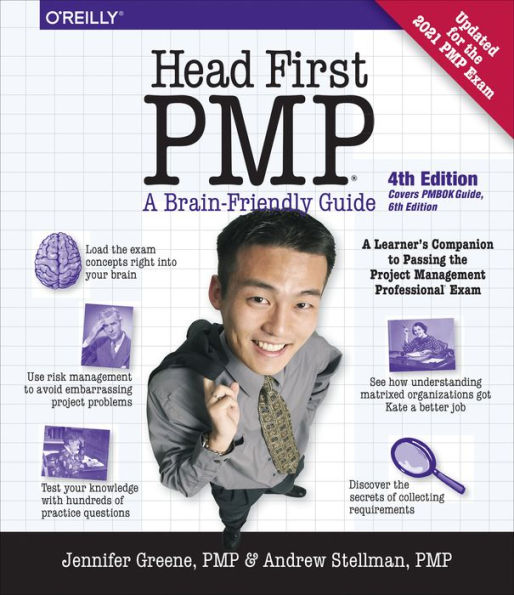
Head First PMP: A Learner's Companion to Passing the Project Management Professional Exam
924
Head First PMP: A Learner's Companion to Passing the Project Management Professional Exam
924eBook
Related collections and offers
Overview
Now updated for the 2021 PMP Exam
What will you learn from this book?
Head First PMP teaches you the latest principles and certification objectives in The PMBOK® Guide in a unique and inspiring way. This updated fourth edition takes you beyond specific questions and answers with a unique visual format that helps you grasp the big picture of project management. By putting PMP concepts into context, you'll be able to understand, remember, and apply them--not just on the exam, but on the job. No wonder so many people have used Head First PMP as their sole source for passing the PMP exam.
This book will help you:
- Learn PMP's underlying concepts to help you understand the PMBOK principles and pass the certification exam with flying colors
- Get 100% coverage of the latest principles and certification objectives in The PMBOK® Guide, Sixth Edition
- Make use of a thorough and effective preparation guide with hundreds of practice questions and exam strategies
- Explore the material through puzzles, games, problems, and exercises that make learning easy and entertaining
Why does this book look so different?
Based on the latest research in cognitive science and learning theory, Head First PMP uses a visually rich format to engage your mind, rather than a text-heavy approach that puts you to sleep. Why waste your time struggling with new concepts? This multi-sensory learning experience is designed for the way your brain really works.

Product Details
| ISBN-13: | 9781492029595 |
|---|---|
| Publisher: | O'Reilly Media, Incorporated |
| Publication date: | 09/11/2018 |
| Sold by: | Barnes & Noble |
| Format: | eBook |
| Pages: | 924 |
| File size: | 101 MB |
| Note: | This product may take a few minutes to download. |
About the Author
Jennifer Greene is an enterprise agile transformation leader, an agile coach, development manager, project manager, speaker, and authority on software engineering practices and principles. She’s been building software for over twenty years in many different domains including media, finance, and IT consulting. She’s led large-scale agile adoption efforts supporting development teams around the world and helped individual team members get the most out of agile practices. She looks forward to continuing to work with talented teams solving interesting and difficult problems.
Andrew Stellman is a developer, architect, speaker, agile coach, project manager, and expert in building better software. Andrew is an author and international speaker, with top-selling books in software development and project management, and world-recognized expert in transforming and improving software organizations, teams, and code. He has architected and built large-scale software systems, managed large international software teams, and consulted for companies, schools, and corporations, including Microsoft, the National Bureau of Economic Research, Bank of America, Notre Dame, and MIT. He's had the privilege of working with some pretty amazing programmers during that time, and likes to think that he's learned a few things from them.
